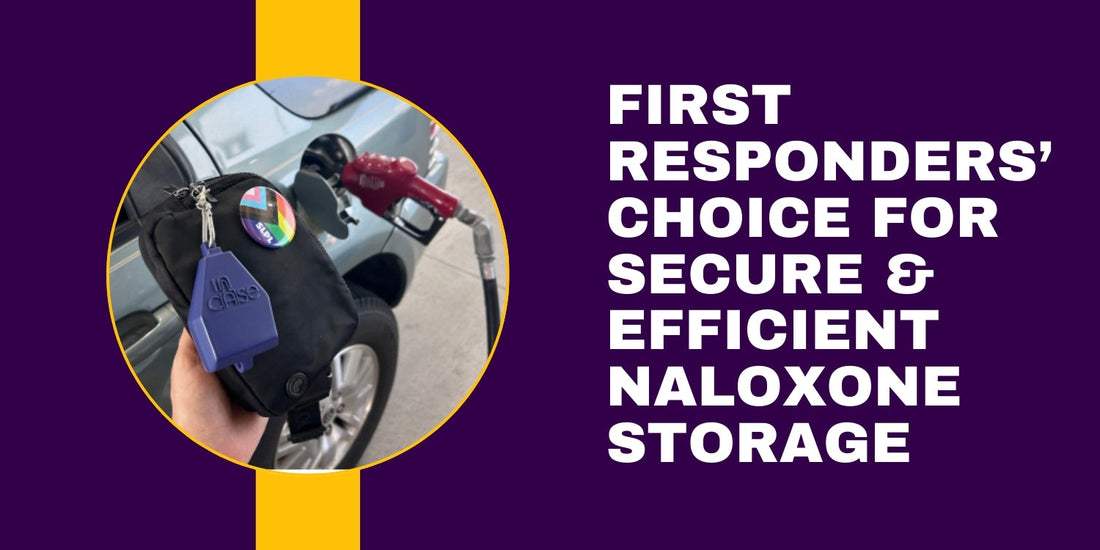
Empowering First Responders with Reliable Naloxone Storage Options
Share
First responders—paramedics, police officers, firefighters, and emergency medical technicians (EMTs)—are often the first people on the scene of an opioid overdose. Their ability to act quickly with naloxone can mean the difference between life and death. However, for naloxone to be effective in an emergency, it must be readily accessible, properly stored, and easy to administer. Reliable naloxone storage solutions are a crucial tool in ensuring first responders can provide immediate and effective overdose reversal.
The Need for Naloxone in First Response
Overdose emergencies require rapid intervention, often before an ambulance arrives. In many cases, law enforcement officers and firefighters are the first on the scene, making it essential that they carry naloxone and have it stored safely and within immediate reach. The faster naloxone is administered, the greater the chance of survival.
Despite its life-saving potential, storage challenges can make naloxone difficult to access in high-pressure situations. Many first responders store naloxone in medical kits, backpacks, or vehicle compartments, but these locations can cause delays in retrieval or expose the medication to damaging environmental conditions. Proper storage ensures naloxone remains effective and available when it matters most.
Challenges First Responders Face with Naloxone Storage
- Temperature Sensitivity – Naloxone should be stored in a temperature-controlled environment. Extreme heat or cold can reduce its potency, making it less effective when needed.
- Portability Issues – First responders carry multiple life-saving tools. Naloxone storage solutions must be lightweight, compact, and easy to access without adding unnecessary bulk.
- Durability Concerns – Emergency responders operate in fast-paced, high-stress environments. Naloxone storage must be crush-resistant and waterproof to withstand rough conditions.
- Quick-Access Requirements – Speed is critical in an overdose situation. Cases with easy-open mechanisms—such as Velcro straps, snap closures, or quick-release attachments—help reduce response time.
Best Naloxone Storage Solution for First Responders
To address these challenges, specialized naloxone carry cases have been developed to ensure accessibility, protection, and convenience.
N-Case Technologies Naloxone Carry Case
- Crush-resistant and water-resistant for durability in extreme conditions.
- Temperature-regulated lining to protect against heat and cold.
- Quick-access design with a belt loop or keychain attachment.
- Compact size that easily fits in medical bags, pockets, or vehicle compartments.
Shop N-Case Technologies Naloxone Carry Cases
Why Proper Naloxone Storage Matters for First Responders
- Ensures medication potency – Proper storage prevents naloxone from degrading due to temperature fluctuations or physical damage.
- Speeds up response times – Easy-access storage solutions reduce delays, ensuring naloxone is immediately available when needed.
- Enhances safety and efficiency – Carrying naloxone in a secure, accessible case allows first responders to focus on administering care without fumbling for supplies.
Final Thoughts: Equipping First Responders with the Right Tools
First responders play a critical role in the fight against the opioid epidemic, and ensuring they have reliable naloxone storage options is an essential part of harm reduction. Investing in high-quality carry cases, pouches, and insulated storage solutions ensures that naloxone remains effective and accessible when it’s needed most.
If you are a first responder, emergency medical provider, or public health official, consider upgrading naloxone storage solutions to maximize readiness and effectiveness.
Shop Naloxone Carry Cases for First Responders
By ensuring naloxone is stored properly and easily accessible, we can empower first responders to continue saving lives in the fight against opioid overdoses.


